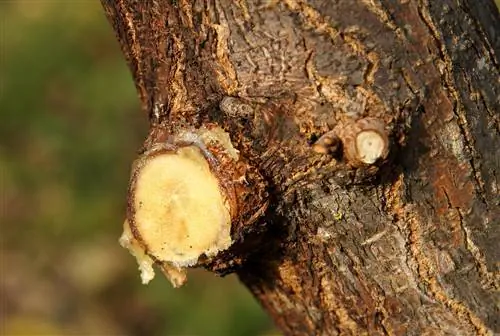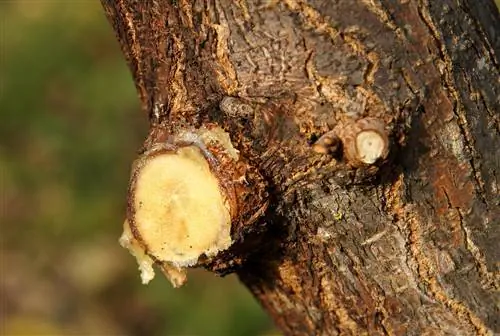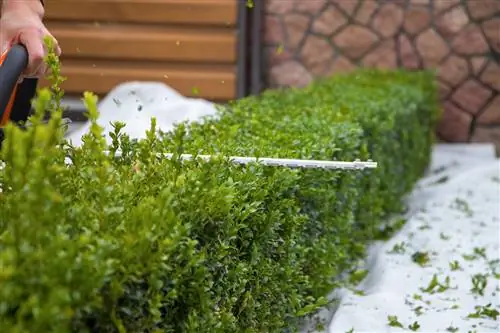- Author admin [email protected].
- Public 2023-12-16 16:46.
- Last modified 2025-01-23 11:19.
There is a change in thinking when it comes to wound closure after tree pruning. Research has debunked the common belief that tree wounds need to be sealed. The arguments are convincing. But there are also exceptions. Read the best tips for sealing wounds after cutting a tree here.

Should you seal tree trimmings?
Sealing tree wounds isnot usefulWound closure agents prevent the formation of wound wood. Sealed tree trimmings promote rot, disease and pest infestation. As an exception, you can seal tree wounds if the bark has split open. After pruning a tree in winter, a wound closure agent protects exposed cambium from frost.
How do I close a tree wound?
You shoulddon't close wounds after a tree trimming. Wound closure prevents cambium from quickly forming wound wood.
Under the bark and bast, the only growth layer in the tree trunk is a thin cambium tissue. If a branch is cut off, the tree registers a wound and switches its cambium into repair mode. Now cambium cells form a bulge of wound wood. This callus tissue overflows the tree wound from the sides. Below the insulation line, the sapwood decomposes and a cavity is created.
Are wound closure products harmful to a tree?
A wound closure agentdoes more harm than good to a treeMoisture collects under the seal and causesrot formationFungal spores and pathogens have often long been present in tree bark and multiply happily in the protected microclimate. Due to the effects of the weather, cracks appear in the wound closure as a welcome entry point for furtherharmful organisms
Under what conditions should tree wounds be sealed?
Sealing tree wounds makes sense whenbark burstsand after atree pruning in early winter In both cases the cambium layer is exposed and can dry out or freeze back. Closing the wound gives the cambium cells enough time to form a callus layer. This is how it works:
- Apply organic wound closure to the crack in the tree trunk at the edge of the wound.
- Cut the detached bark smoothly, apply clay to the tree wound and wrap it with foil or jute.
- Dust cuts with disinfectant charcoal powder or stone dust.
- Brush the wound edges thinly with tree wax or spray with tree tar.
Tip
Pruning trees in late winter
Convincing reasons for pruning trees in late winter. In February the sap pressure increases and supplies the cambium with energy for the formation of wound wood. Late winter reserve substances strengthen the immune system against diseases and pests. Leafless trees provide a clear view for correct cutting. The breeding and breeding season has not yet begun. In the Federal Nature Conservation Act, heavy tree pruning is permitted until March 1st.






